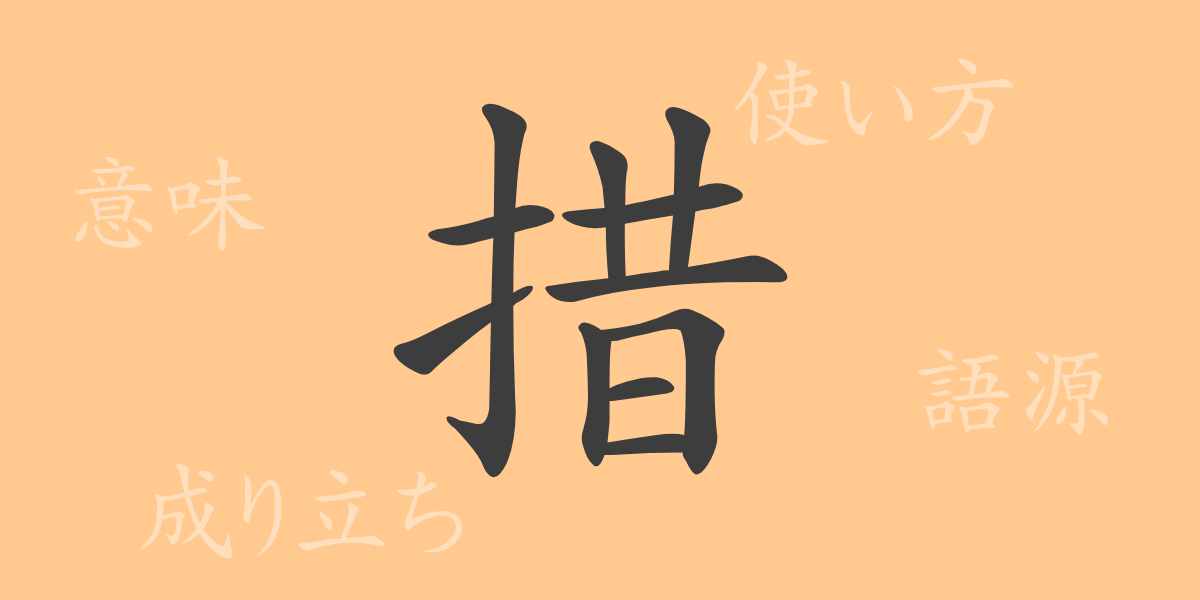Kanji, as one of the richest expressions in the Japanese language, intertwines deeply with our daily lives, yet often its origins and details remain obscure. This article shines a spotlight on the character “措” (ソ), exploring its development, meaning, and usage, as well as the commonly used idioms and phrases derived from it. Through the deep history and culture encapsulated in this single Kanji, we aim to enhance the understanding of the Japanese language.
Origins of 措 (ソ)
The Kanji “措” (ソ) has ancient origins, formed from the combination of “手” (テヘン), meaning hand, and “昔” (ムカシ), representing ancient cloth. Initially depicting the action of wrapping and holding objects in cloth, it evolved to mean “to place” and “to manage.” Over time, through various cultural shifts, “措” (ソ) has come to play a significant role in contemporary Japanese.
Meaning and Usage of 措 (ソ)
“措” (ソ) conveys meanings such as “to place,” “to consider,” and “to arrange.” It is often used when positioning something in a particular state or managing a situation. It can also imply keeping something in mind or being cautious. The character is versatile in phrases such as “措置” (ソチ), “措辞” (ソジ), and “配慮を措く” (ハイリョヲオク), adapting to various contexts with expressions that reflect consideration and care.
Readings, Stroke Count, and Radical of 措 (ソ)
The Kanji “措” (ソ) offers basic yet essential information:
- Readings: The on’yomi (Sino-Japanese reading) is “ソ” (ソ), and the kun’yomi (native Japanese reading) is “お.く” (オク).
- Stroke Count: A total of 12 strokes.
- Radical: Hand radical (手/テヘン).
Idioms and Proverbs Using 措 (ソ) and Their Meanings
Idioms and phrases involving “措” (ソ) are prevalent in Japanese. For example, “措置” (ソチ) refers to measures or actions taken in a situation, “措辞” (ソジ) means the choice of words or phrasing, and the phrase “配慮を措く” (ハイリョヲオク) is used to express consideration or empathy. These expressions are valuable in business contexts and everyday conversation, helping to convey respect and thoughtfulness toward others.
Summary on 措 (ソ)
The Kanji “措” (ソ), as indicated by its formation, carries the implication of placing things in a location or managing them in some manner. It is also used to express care and consideration towards others, showcasing its flexible usage. As a common Kanji in Japan, “措” (ソ) enriches various phrases and expressions, revealing the depth of the language. Knowing the background of these characters is incredibly meaningful for deepening one’s understanding of Japanese.

























